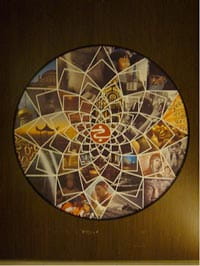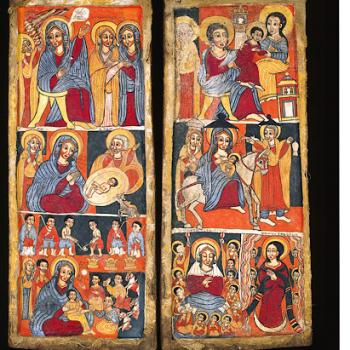By Jim Burklo
 Here at the University of Southern California, part of my job as Associate Dean of Religious Life is to staff the student Interfaith Council. This group of 15-20 students from many different religious backgrounds gathers every week for an evening of discussion over dinner. The students share about their faith traditions and spiritual journeys, and with fascination learn a great deal from each other. For the past two meetings, for instance, they have been playing their favorite spiritual music to each other on their computers and phones. We've listened to black spirituals, Coptic Easter anthems, Arabic Muslim and Indian Sikh chants, and rock tunes in which students find soulful inspiration.
Here at the University of Southern California, part of my job as Associate Dean of Religious Life is to staff the student Interfaith Council. This group of 15-20 students from many different religious backgrounds gathers every week for an evening of discussion over dinner. The students share about their faith traditions and spiritual journeys, and with fascination learn a great deal from each other. For the past two meetings, for instance, they have been playing their favorite spiritual music to each other on their computers and phones. We've listened to black spirituals, Coptic Easter anthems, Arabic Muslim and Indian Sikh chants, and rock tunes in which students find soulful inspiration.
Most of the students in our group identify with one or another recognizable faith tradition. But several do not. These students are nonetheless intensely interested in religion and spirituality. Since we usually have newcomers at each gathering, the students go around the room and identify themselves. Last year, one of our unaffiliated students described himself as "interspiritual."
That was the first time I'd heard the term. Since then, other students in our group have adopted this identity.
It intrigues me. It's different than the word "interfaith." People sometimes struggle to understand what interfaith work is really all about. Interfaith worship -- what can that possibly be? A formless mush of scrambled doctrine? A theological curry? A cacophony of conflicting chants? If "inter" means between or among, does that mean that "interfaith" is nowhere or nothing in particular?
In my experience, interfaith relationships are richest when people bring to the table the distinctive uniqueness of their religions, while being deeply intrigued by the particularity of the faiths of others. That place of fascination, curiosity, and soulful engagement is the "somewhere" of interfaith work. It includes beautiful, meaningful worship events that do not gloss over the significant differences among faiths, even while celebrating the commonalities.
But an increasing number of Americans -- now nearly 25% of young adults -- have no traditional religious identity. What do they bring to our dinner table on Tuesday evenings at the USC Office of Religious Life?
They bring their own stories of engagement with the ultimate questions: Why am I here? Who am I, really? How shall I live, and for what/whom? They bring their own language and imagery of expression of their souls' journeys. They bring a willingness to try out disciplines of spirituality they've never experienced before. Maybe they are not ready to commit fully to one traditional path. But they aren't afraid to risk that outcome by exploring existing faith traditions. They are eager to know the souls of other people, and the great Soul at the heart of us all.
Maybe that is why the word "interspiritual" makes more sense to them than "interfaith." They want to be between and among, and even within, the spirits of those around them, people from all manner of religious backgrounds, or no religion at all. They don't see their spirits as existing in isolation. They feel affiliated with people of many faiths or no particular faith, so they don't feel compelled to officially affiliate with any one religion. They aren't lonely in their lack of formal religious belonging. They have found ways to connect deeply with others beyond the bounds of sectarian identity.
My students have helped me understand myself as an "interspiritual Christian." I identify strongly with Christianity, and at the same time I see myself as fully "among and between" faithful people who follow religions different than my own. Not only does my Christianity not get in the way of interfaith relationships, it actually enhances them. Because I am steeped so deeply in my faith, I can introduce it to others who are curious about it. And every time I learn something new about other faiths, I learn more about my own. Comparing and contrasting with elements of other religions, I get a more detailed three-dimensional (maybe even four-dimensional) view of aspects of my religion that I never noticed before.
"Interspiritual" students have something in common with "generic Christian" students I meet on our campus. The trend among evangelical Christian young people is to avoid any extra denominational or other religious label except "Christian." When I worked at Stanford, we watched the statistics over the years as freshmen indicated their religious preference at the start of their college careers. Every year, the number of Methodists, UCCs, Presbyterians, etc., went down, while the overall number of Christians stayed about the same. Denominational identity is clearly the wave of the past. Part of the students' preference for being "just Christian" is a reflection of their unawareness of distinctly different, but equally valid, ways of being Christian. They have no idea that, in fact, their beliefs and practices are sectarian within the Christian faith. There is no such a thing as truly "generic" Christianity.




